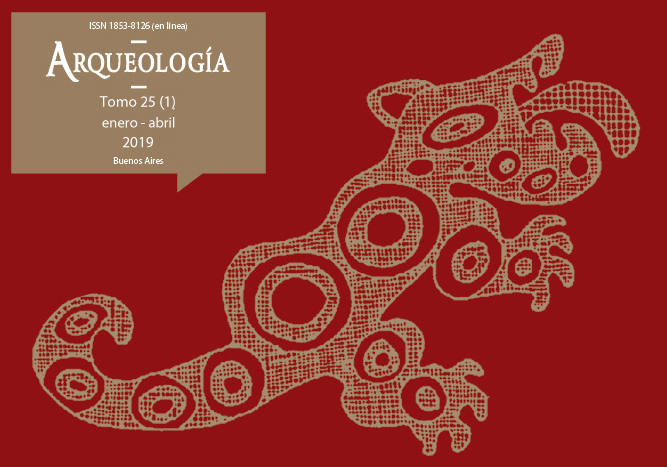To be used in the kitchen. Acquisition, production and use of lithic artifacts in Structure 1 of Cardonal (Cajón Valley, Catamarca)
Keywords:
Technology, Stone tools, Lithic knapping, Domestic activities, Raw materials
Abstract
This paper presents the reconstruction of lithic knapping activities carried out within Structure 1 of Compound 1 in the Cardonal archaeological site (Cajón Valley, Catamarca) at the beginning of the Christian Era. The study of this structure, interpreted as the house kitchen, allowed us to analyze microscale technological processes, and so address the sum of technical actions that constituted daily life within the house. We evaluated the selection of lithic resources chosen by the inhabitants of the house and studied artifact variability within the lithic assemblage recovered, thereby identifying the lithic technological activities that occurred in the room. The methodology employed and the results obtained allowed us to determine the diversity of rocks used, as well as to reconstruct a wide range of lithic production activities. We focused on lithic technology embedded in everyday practices within network frameworks that included not only other Cardonal residents, but also more distant people and landscapes.Downloads
Download data is not yet available.
Published
2019-02-01
How to Cite
Sentinelli, N., & Scattolin, M. C. (2019). To be used in the kitchen. Acquisition, production and use of lithic artifacts in Structure 1 of Cardonal (Cajón Valley, Catamarca). Arqueología, 25(1), 69-93. https://doi.org/10.34096/arqueologia.t25.n1.6003
Section
Articles
Copyright (c) 2019 Natalia Sentinelli, M. Cristina Scattolin

This work is licensed under a Creative Commons Attribution-NonCommercial-ShareAlike 4.0 International License.
Authors who publish in this journal agree to the following conditions:
- Authors retain copyright and yield to the journal right of first publication with the work registered with attribution license Creative Commons, which allows third parties to use the published always mentioning the authorship of the work and first publication in this magazine.
- Authors can make other independent and additional contractual arrangements for the non-exclusive distribution of the version of the article published in this issue (p. Eg., Inclusion in an institutional repository or publish it in a book), provided that clearly indicate that the work was published for the first time in this magazine.
- It allows and encourages the author / s to publish their work online (eg institutional or personal pages) before and during the process of revision and publication, as it can lead to productive exchanges and greater and more rapid dissemination of work published (See The Effect of Open Access).





(1)13.png)






1.jpg)
1.jpg)


13.png)
1.png)


(1)1.png)









